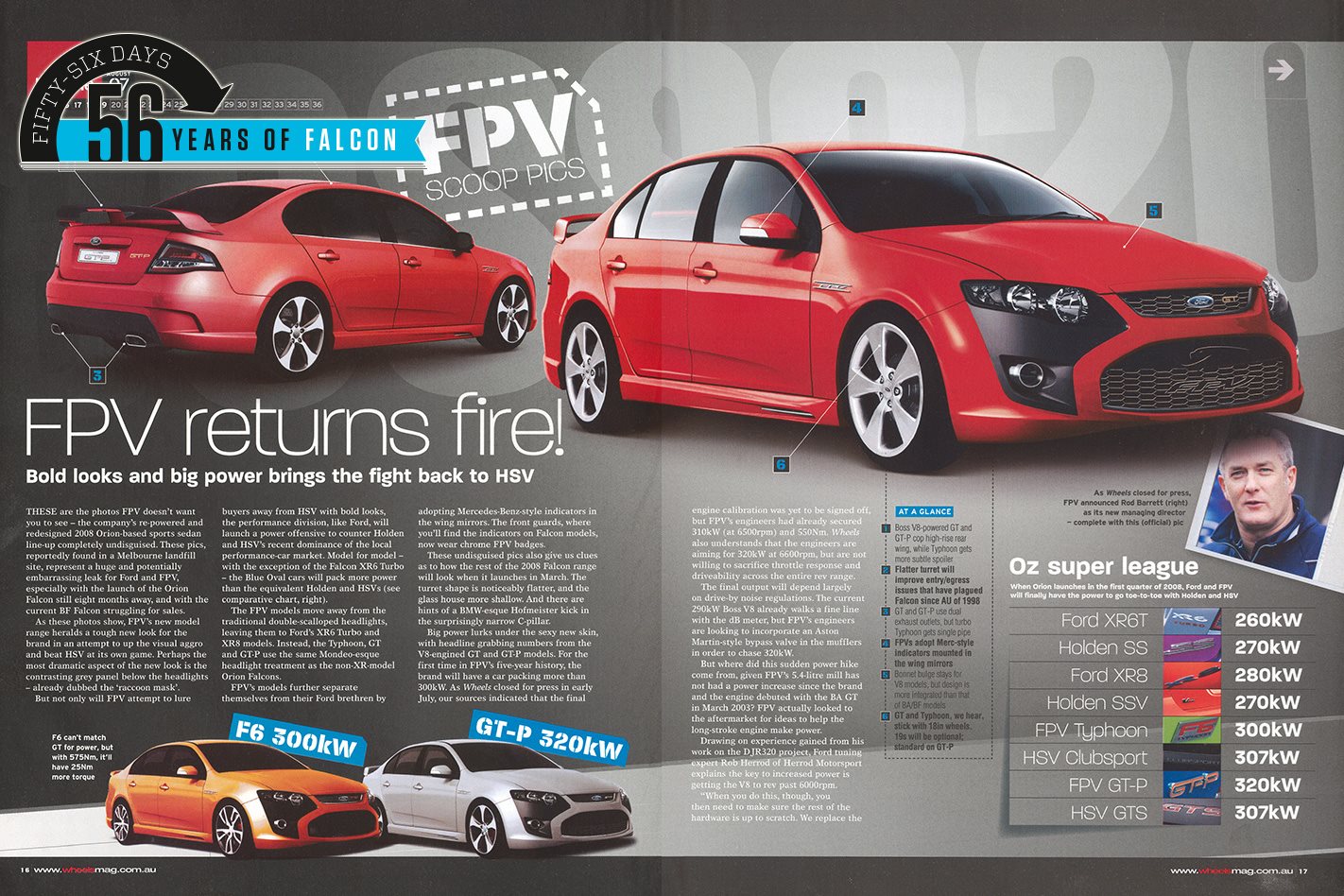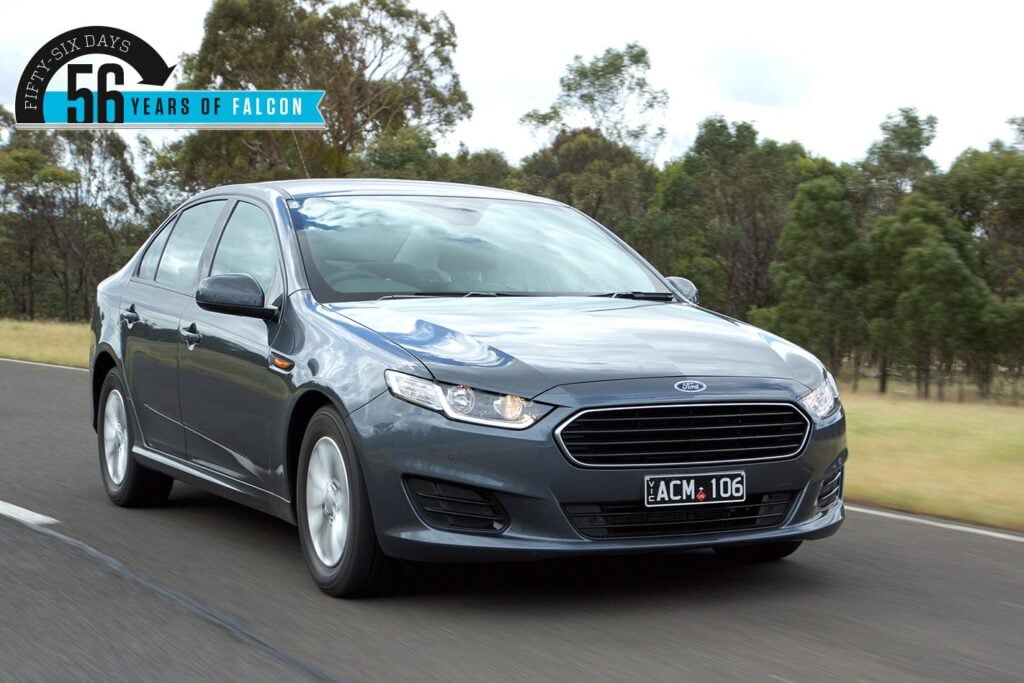First published in the April 2007 issue of Wheels magazine, Australia’s best car mag since 1953.
These are the photos FPV doesn’t want you to see – the company’s re-powered and redesigned 2008 Orion-based sports sedan line-up completely undisguised.
These pics, reportedly found on a Melbourne landfill site, represent a huge and potentially embarrassing leak for Ford and FPV, especially with the launch of the Orion Falcon still eight months away, and with the current BF Falcon struggling for sales.
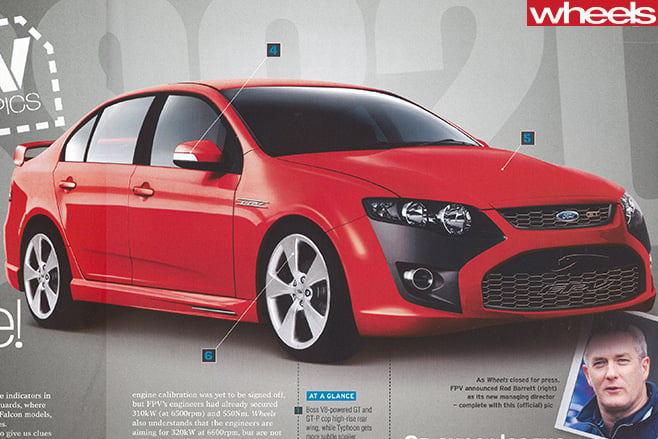
But not only will FPV attempt to lure buyers away from HSV with bold looks, the performance division, like Ford, will launch a power offensive to counter Holden and HSV’s recent dominance of the local performance-car market.
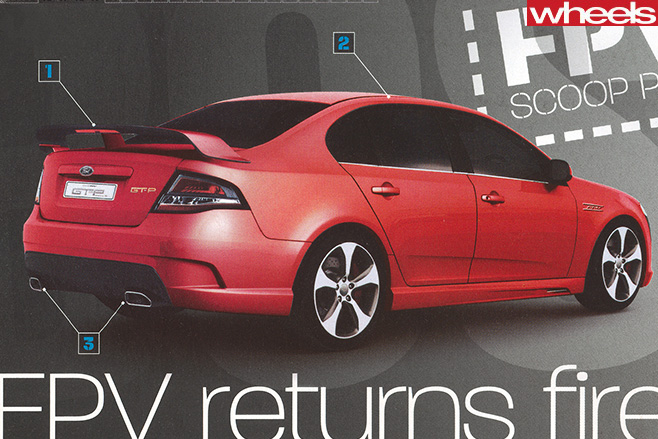
The FPV models move away from the traditional double-scalloped headlights, leaving them to Ford’s XR6 Turbo and XR8 models. Instead, the Typhoon, GT and GT-P use the same Mondeo-esque headlight treatment as the non-XR-model Orion Falcons.
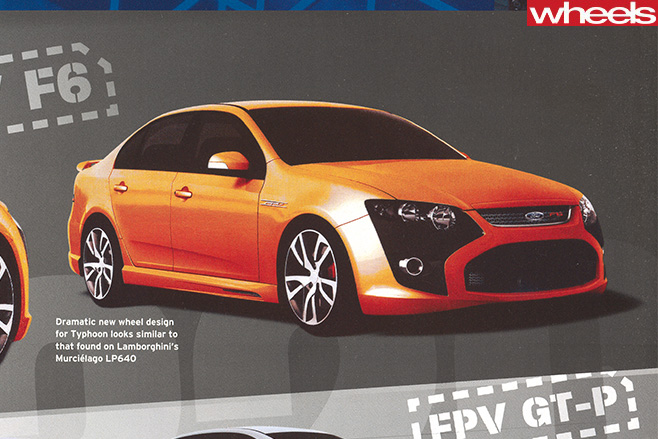
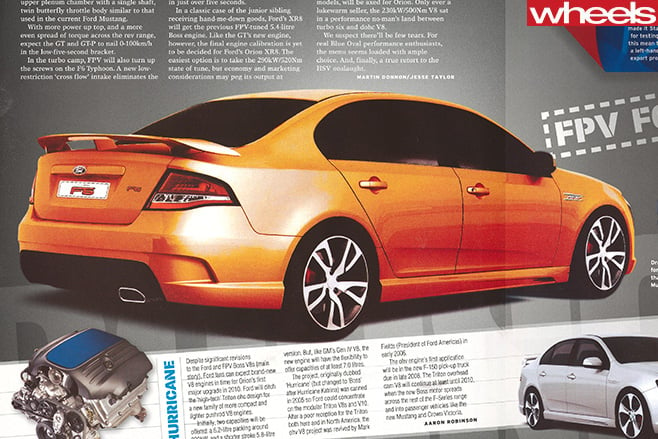
As Wheels closed for press in early July, our sources indicated that the final engine collaboration was yet to be signed off, but FPV’s engineers had already secured 310kW (at 6500rpm) and 550Nm.
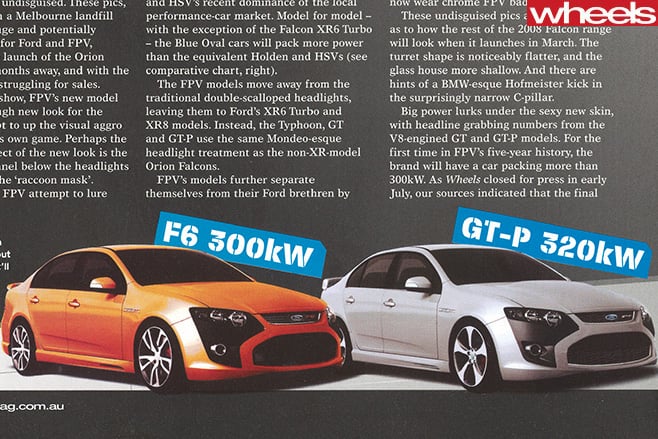
The final output will depend largely on drive-by noise regulations. The current 290kW Boss V8 already walks a fine line with the dB meter, but FPV’s engineers are looking to incorporate an Aston Martin-style bypass valve in the mufflers in order to chase 320kW.
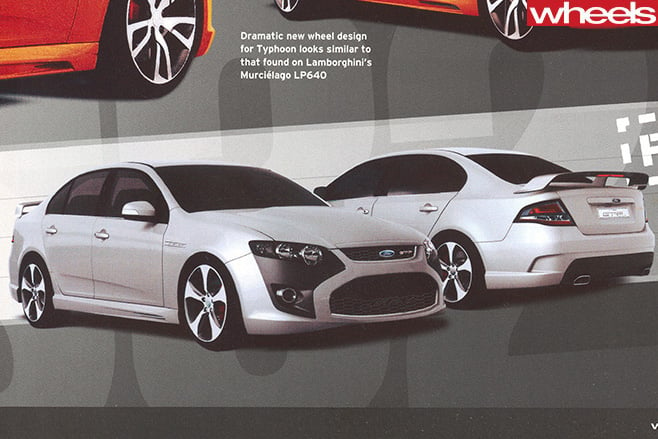
Drawing on experience gained from his work on the DJR320 project, Ford tuning expert Rob Herrod of Herrod Motorsport explains the key to increased power is getting the V8 to rev past 6000rpm.
“When you do this, you then need to make sure the rest of the hardware is up to scratch. We replace the oil-pump gears in the engine straight away as the factory units can fracture – with catastrophic consequences.”
Aside from similar changes, expect FPV to fit larger inlet and exhaust valves to ensure the engine can meet the gas flow requirements associated with higher rpm.
To aid breathing on the intake side, the big-hitting V8 Boss engine gets a different upper plenum chamber with a single shaft, twin butterfly throttle body similar to that used in the Ford Mustang.
With more power up top, and a more even spread of torque across the range, expect the GT and GT-P to nail 100km/h in the low-five-second bracket.
In the turbo camp, FPV will also turn up the screws on the F6 Typhoon. A new low-restriction ‘cross flow’ intake eliminates the messy plumbing that runs over the cam cover used in the current Typhoon.
To make the most of the improved plumbing, FPV has wound an extra 0.13bar of boost pressure from the existing turbocharger (to 0.77bar), and the turbo 4.0-litre straight six will now thump out at 300kW and around 575Nm. Like the GT, the Typhoon should thunder to 100km/h in just over five seconds.
In a classic case of the junior sibling receiving hand-me-down goods, Ford’s XR8 will get the previous FPV-tuned 5.4-litre Boss engine. Like the GT’s new engine, however, the final engine calibration is yet to be decided for Ford’s Orion XR8.
The easiest option is to take the 290kW/530Nm state of tune, but economy and marketing considerations may peg its output at 280kW, giving it a 20kW gap to the more expensive FPV typhoon.
The XR6 Turbo is expected to get a 15kW hike to 260kW, augmented by at least 500Nm – up 20Nm. All this engine work has brought about a rationalisation, however. Wheels sources indicate that the sohc 5.4-litre V8, offered as an option on XT, Fairmont and Fairlane models, will be axed for the Orion. Only ever a lukewarm seller, the 230kW/500Nm V8 sat in a performance no-man’s land between the turbo six and the dohc V8.
We suspect there’ll be a few tears. For real Blue Oval performance enthusiasts, the menu seems loaded with ample choice. And, finally, a true retort to the HSV onslaught.

